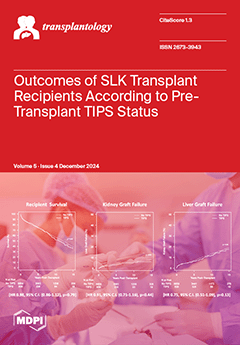Background: The accurate assessment of the glomerular filtration rate (GFR) in potential living kidney donors (PLKDs) is essential for successful transplantation and safeguarding kidney donation practice. Scintigraphy-measured GFR (mGFR) is widely regarded as the clinical reference standard. Various estimated GFR (eGFR) equations, such as the Modification of Diet in Renal Disease (MDRD), Cockcroft–Gault (CG), and Chronic Kidney Disease Epidemiology Collaboration (CKD-EPI) equations, have been developed; however, none have been specifically validated for Vietnamese PLKDs. This study aimed to evaluate the accuracy of eGFR formulas compared to mGFR in PLKDs.
Methods: This convenience retrospective study analyzed 189 PLKDs at Cho Ray Hospital in Vietnam from January 2014 to December 2020. The eGFR was calculated using various formulas and compared to the mGFR assessed using
99mTechnetium-diethylenetriaminepentaacetic acid. Bias, accuracy, and Bland–Altman plots were used to assess the significance of the eGFR values.
Results: The median mGFR was 94.20 mL/min/1.73 m
2 (interquartile range [IQR]: 88.40–100.50). The eGFR values were as follows: 77.52 mL/min/1.73 m
2 (IQR: 70.50–86.33) for CG; 76.14 mL/min/1.73 m
2 (IQR: 68.05–83.37) for MDRD; 106.80 ± 15.24 mL/min/1.73 m
2 for CKD-EPI cystatin C 2012; 96.44 ± 13.40 mL/min/1.73 m
2 for CKD-EPI creatinine cystatin C 2012; 88.74 ± 13.27 mL/min/1.73 m
2 for CKD-EPI creatinine 2021; and 101.32 ± 12.82 mL/min/1.73 m
2 for CKD-EPI creatinine cystatin C 2021. Among these formulas, the CKD-EPI creatinine cystatin C 2012 (P30 = 98.96%) and 2021 (P30 = 97.92%) showed the best consistency with the mGFR, owing to their high accuracy, low bias, and narrow limits of agreement in the Bland–Altman plots.
Conclusions: The CKD-EPI equations based on creatinine and cystatin C are reliable tools for donor screening.
Full article




